Training Plan Guide: How to Coach Yourself to Peak Fitness
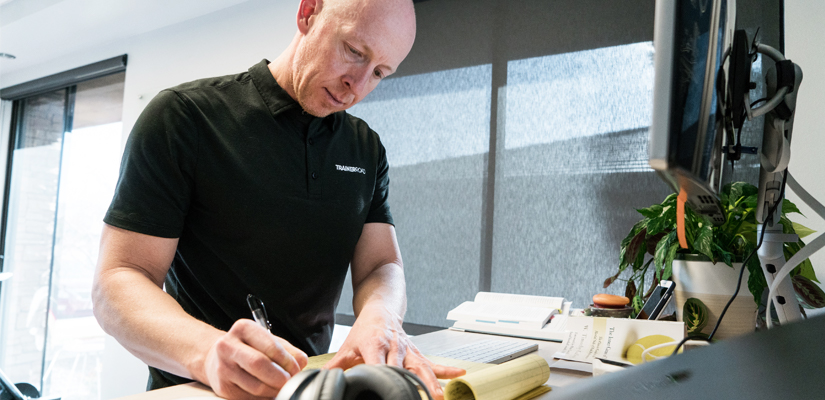
No time, no coach, no problem. Coach Chad shares his proven, science-backed training process that takes busy athletes from base to peak.
Table of Contents
This guide was written with order in mind, but if you want to jump around feel free to do so by clicking on the hyperlinked questions below.
- Base Phase Training: Everything You Need to Know
- Key Points to Know About Base Training
- Build Phase Training: Everything You Need to Know
- What Build Phase Training Plan is Right For Me?
- Specialty Phase Training: Everything You Need to Know
- How to Approach Racing during Specialty Training
- The Transition After Specialty Training: Re-build, Off-season, or Maintenance Training
- How to Build a Second Fitness Peak
- How to Approach the Off-Season to Focus on a Limiter
- How to Maintain Fitness After a Full Training Season
- Training Plan Resources
Base Phase Training: Everything You Need to Know
To get faster on the bike, there’s an optimal, science-backed training process to follow. The results of your race season hinge on how you approach the beginning phase of your training, which is known as the Base Phase.
Many riders take a traditional approach to building their base fitness in the Base Phase, despite not having a schedule that allows for a large number of dedicated training hours. If you fall into this bucket of wanting to get faster, but not having (or wanting to dedicate) a lot of time to training, there is another approach that will prepare you for a faster season.
Can Any Rider Get Faster?
Even if you are more time strapped than you’ve ever been, you can achieve your fastest season. In my 25+ years of racing experience and 10+ years of coaching cyclists of all disciplines and backgrounds, I’ve found athletes who want to get faster do not need to dedicate an exhausting number of hours each week to training.
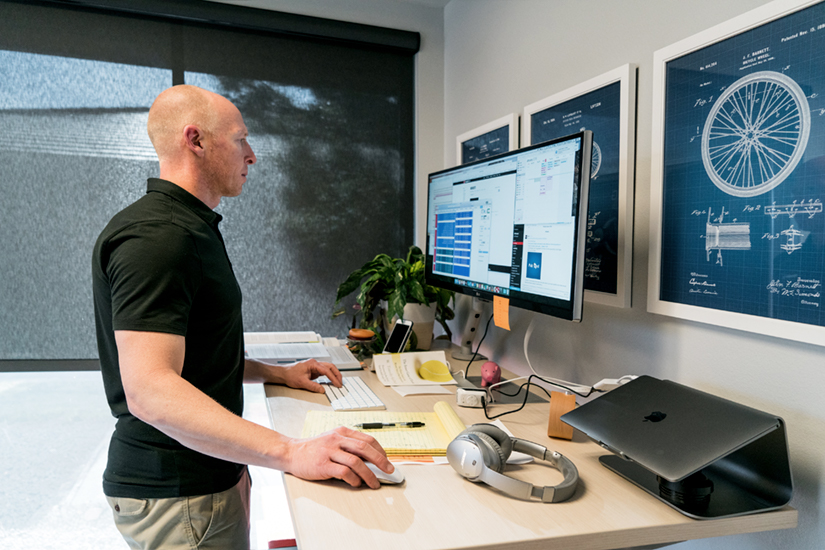
Far too many cyclists hold the limiting belief that their job, family and other responsibilities determines if they can become a stronger cyclist or not. These things do not decide if you get faster, rather how you train does. It’s the quality, not quantity, of your workouts that gradually build you into a faster cyclist in the most efficient way possible. This is not a theory, but a fact. A fact which I have dedicated my life to researching and proving valid in my role as TrainerRoad’s Head Coach.
High-quality interval workouts give you the same amount — if not more — fitness gains as long hours of low-intensity work. In preparation for your fastest season, I’m going to dive deeper into this training principle within the context of Base Phase training.
Adaptive Training
Get the right workout, every time with training that adapts to you.
Check Out TrainerRoadWhat You’ll Gain from Optimal Base Training
Optimal training begins with the Base Phase. By dedicating a phase of training exclusively to establishing a foundation of fitness, you are able to put a laser-beam focus on the fundamentals.
Foundational development of various energy systems occurs during the Base Phase. These adaptations include slow and intermediate muscle fiber attributes, fat metabolism via greater mitochondrial proliferation, and increased capillary beds within your muscle tissue. These characteristics translate into greater aerobic and muscular endurance through increased oxidative enzymes, increased delivery of oxygenated blood to the working muscles, and even increased pumping capacity of the heart.
How to Achieve Optimal Base Training
Cyclists establish a foundation of fitness through a healthy balance of Aerobic Endurance, Muscular Endurance, and Form/Speed/Power work. You can accomplish this one of two ways:
- High-volume training focused in Power Zone 3 (Tempo), Power Zone 2 (Endurance) and Power Zone I (Active Recovery). This is otherwise known as “Traditional Base training” and requires approx. 10-20 hours/week minimum to reap its intended benefits.
- Lower volume training is focused on a wider variety of power zones (VO2max, Sweet Spot, threshold, tempo). I refer to this type of training as “Sweet Spot Base” training and it requires as little as 5 hours/week to reap its intended benefits.
I recommend the Sweet Spot Base training approach to most cyclists, as it broadens the base in a much more optimal way: through applying progressive, properly timed and systematic training stress. I suggest athletes spend 12 weeks in Base training.
Example of a Sweet Spot Base workout: I’ve created an entire Base Phase training plan with the Sweet Spot Base approach in mind — it’s appropriately named Sweet Spot Base. An example of a workout (which you can replicate for yourself on or off the trainer) you can expect in this plan is a workout I’ve called Eclipse.

Eclipse is a 3×20-minute interval workout with 5 minutes of recovery between intervals. The intervals oscillate between 88-94% of FTP, and aim to further muscular endurance and enhance aerobic capabilities. Prior to these Sweet Spot efforts, the workout kicks off with a structured 15-minute warm up that’ll get you riding in the Active Recovery, Endurance and Tempo zones, and ends with a 5-minute cool down in Active Recovery.
Why the large difference between a Traditional and Sweet Spot Base Approach?
The discrepancy in the number of training hours required for Traditional Base versus Sweet Spot Base training to be effective begs the question: How can an athlete get faster with fewer training hours? Here’s the cold, hard truth. Despite being well intentioned, many athletes following a high volume, low-intensity traditional base approach do not fully realize how many hours are required to get the type of gains they’re chasing. As mentioned above, it’s in the ballpark of 15-20/hrs a week.
Key Points to Know About Base Training
The problem: Many riders following a traditional approach are not able to dedicate an appropriate number of hours to training each week and so they fall short in their efforts and never achieve the fitness gains they’re working for.
The solution: Sweet Spot Base training. Base training accomplished through higher intensity intervals that fall inside or around the Sweet Spot power zone (88-94%) allows cyclists to build their aerobic capacity in less time while preparing for the intense demands of their race season. What’s more, by stressing the aerobic system just enough, necessary groundwork is laid early in training to increase aerobic capacity in later phases of training.
Takeaway:
Riders can earn more fitness in less time through high-intensity Sweet Spot Base training.
Can I Skip Base Training?
Some riders may be tempted to bypass their base training, but if you’re new to the rigors of high-intensity training or you’ve been off the bike for an extended period of time, a focus on base training is especially important. Don’t skip it.
If you’ve been out on the road tackling unstructured, low-intensity miles, you won’t need to put as much focus into establishing a foundation of fitness, but you still should dedicate some time to it. Everyone can benefit from re-entering their training season in the Base phase. It simply comes down to how much time and how often you feel you should revisit it.
Summary of Base Phase training
Building a foundation of fitness is the first step toward achieving your fastest season. This is done through a foundational training, otherwise known as Base Phase training. There are two approaches to base training: traditional base training and Sweet Spot Base training. Cyclists achieve greater fitness in less time following the Sweet Spot Base training approach.
Build Phase Training: Everything You Need to Know
To escalate our fitness beyond base training, we will progress through a second phase in the training plan process, which is known as the Build Phase.
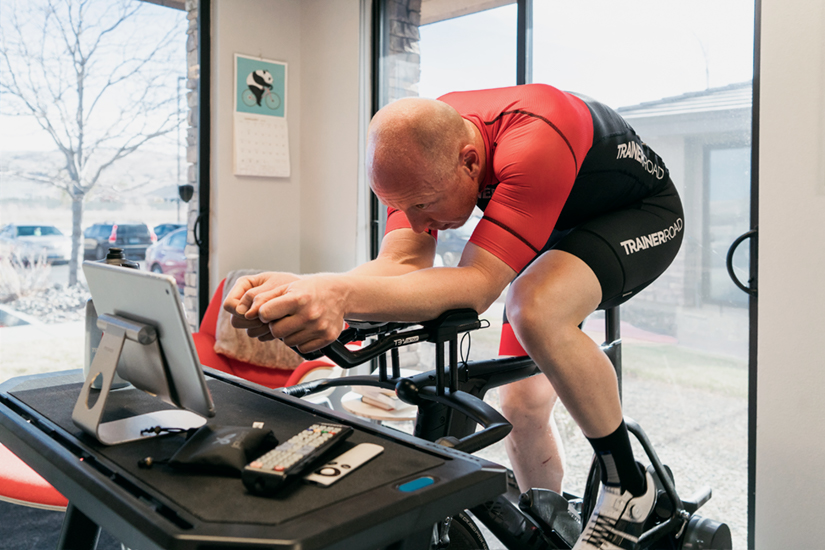
To increase our cycling abilities and become more proficient at the demands of the events which we face, the Build Phase of training increases the overall weekly workload and shifts focus towards specific performance goals. Through a blend of sustainable power and high power for short durations, the emphasis of training moves beyond the fundamental skills established in the Base Phase of training and shifts to a focus on elevating those abilities.
It is in the Build Phase of training where I increase your weekly training stimulus and structure your intervals with the types of efforts you’ll be faced with in your riding/racing discipline. In preparation for your fastest season, I’m going to dive deeper into this training principle within the context of Build Phase training.
What You’ll Gain from Optimal Build Training
Optimal training continues into the Build Phase of your training season. Emphasizing on the areas of your performance that become increasingly specific to your events and types of riding, the Build phase of training draws exclusively on the fundamental skills established in Base phase training to increase your specific power capabilities.
The development of cycling specific performance capabilities occur in the Build Phase and this is where athletes will target increasing their Functional Threshold Power. Not only does Build phase training allow athletes to heighten their level of training specificity, it also brings their fitness to a point where middle-priority events can factor into their weekly training.
What Build Phase Training Plan is right for me?
Cyclists draw on fundamentals from the Base phase of training by expanding on three main areas of their capabilities: Muscular Endurance, Aerobic Endurance, and a mixture of Form/Speed/Power — the same three areas of your abilities established in the Base Phase.
Through a blend of workouts in various power zones (Tempo, Threshold, Sweet Spot, VO2Max, Anaerobic), Build phase training is intended to elevate your Functional Threshold Power and general cycling capabilities before refining them in the next training phase that follows. I recommend athletes spend 8 weeks in Build training.
I recommend three different approaches to Build phase training depending on the type of rider you are: Short Power, General Power, or Sustained Power Build Phase training plans:
- Short Power Build includes a healthy balance of muscular endurance work but trades an increased emphasis on VO2Max and Anaerobic efforts with a reduction in sustainable power focus. Less muscular endurance, more repeatable aerobic power. This approach suits a rider who needs more explosive, short-punchy power capabilities. Criterium racers, cyclocross competitors, and nearly all MTB & track riders fall into this category.
- General Power Build is geared more towards the athlete who’s discipline doesn’t require any more focus on short punchy power than it does sustainable power. Therefore, the General Power Build phase training plan fits a rider looking to capitalize on a well-rounded blend of abilities in both areas.
- Sustained Power Build is focused on developing greater sustained power through the use of strength endurance work (Sweet Spot), lactate tolerance workouts (Threshold), and a healthy dose of maximum aerobic power intervals (VO2max). These areas of focus translate to the ability to sustain high percentages of FTP for increasingly long durations.
- Where the Short Power Build plan saw a swap out for VO2Max intervals, Sustained Power Build phase plans will see the inclusion of more Sweet Spot, Threshold, and Over-Under type workouts. Multisport athletes, time trial specialists, century & gran fondo riders, and climbing road racers all fall into this category.
Examples of Build phase workouts: Below I’ve listed one workout from each of the Build phase training plans I recommend that you can try for yourself:

Spanish Needle: is a workout I’ve created that targets the Aerobic energy system but does so via short, closely-stacked anaerobic repeats. The format is 6×8-minute sets of microbursts consisting of 15 seconds at 150% of FTP, followed directly by 15 seconds at 40% FTP. With 5-minute recovery valleys between each set, Spanish Needle begins with a 6-minute ramping warm up from 50%-90% of FTP, and ends with a 5-minute ramping cooldown from 40%-30% of FTP.

Palisade: is a workout that falls into the Threshold and Sweet Spot category. Through 5×9-minute intervals alternating slightly above or slightly below FTP combining efforts of 1-minute at 95% FTP followed by 2-minute efforts at 105% FTP, this over-under workout includes 6-minute recovery valleys between each set of intervals. Palisade begins with a 10-minute ramping warm up from 50%-95% of FTP, and ends with 6-minutes of ramping cooldown from 40%-30% of FTP.

Mount Goode +2: is a workout that targets the Threshold power zone through 3×18-minute intervals at 97-99% FTP with short, 3-minute recoveries between intervals. Mount Goode begins with 20-minutes of ramping warm up from 50%-95% of FTP, and ends with a 5-minute ramping cooldown from 40%-30% of FTP.
How Important is Build Training?
Build Phase training is a critical step in developing cycling-specific performance capabilities and increasing your FTP which I do not recommend skipping. Should you find yourself confined to a restrictive training schedule that pressures you to skip the recommended 8 weeks in a Build phase of training, prioritize your training phases to make sure you have a solid foundation of Base fitness before deciding to shorten your time in the Build phase.
Summary of Build Phase training
Elevating your discipline-specific performance capabilities and increasing your Functional Threshold Power is the next step toward achieving your fastest season. This is done in the Build phase of training by drawing on elements of the fundamental forms of fitness established during Base training and is capitalized on the training phases that follow.
Specialty Phase Training: Everything You Need to Know
To refine our cycling abilities and achieve peak fitness, making both highly specific to our cycling discipline and racing demands, we will progress through the third (and potentially final) training phase: the Specialty Phase.
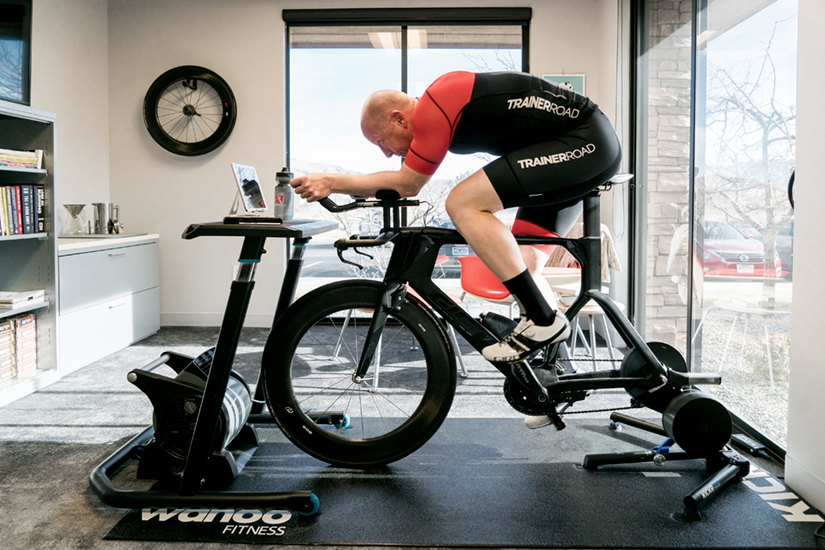
Specialty Phase training plans integrate the principle of specificity into training. Each training plan in this training phase strives to be as specific to your target events or riding discipline as possible. So the workouts you’ll find in this training phase focus on the specific cycling goals/efforts that you’ll be faced with on the road, mud, gravel, or whatever tickles your fancy.
What You’ll Gain from Optimal Specialty Training
Athletes will achieve their fitness “peak” by emphasizing the refinement of cycling specific activities during Specialty training. This is not exclusive to anatomical and physiological adaptations; specialization applies to psychological, technical and tactical features as well. No matter what cycling specific activities you take part in, these are the skills you’ll sharpen to “peak” for important competitions (or rides you want to be flat out fast in).
Time trialing, sprinting, attacking, climbing, descending, team tactics, individual strategy — each are examples of cycling-specific capabilities that we want to perform within our highest capacity at. Research demonstrates, integrating specialization into a dedicated training phase spurs the human body to adapt specifically to the activities the individual participates in.
How to Approach Specialty Training to Peak At the Right Time
Moving into a focus on progressively increasing competition intensity and volume to specific performance capabilities, optimal Specialty training transitions out of Base and Build Phase training. I suggest athletes spend 8 weeks in this training phase. By keeping workout intensity high, and by transitioning training volume to be relatively moderate, conditioning is maintained and a layer of “freshness” for the athlete is revealed.
Integrating a progressive training load throughout the season, ultimately leading up to achieving a “peak” in abilities, operates on the basis that your body’s capacity for work gradually increases over an extended period. In other words, there’s a direct relationship between your individual rate of improvements in performance and the rate and manner you increase your training load. The point is, you’re shortchanging yourself on the fitness peak you can actually achieve by cutting your time short in Base and Build Phase training.
My recommendations for Specialty Phase training depend on a rider’s racing and/or riding discipline. Here’s a few examples of the workouts you’d find in time trial-, criterium-, and triathlon-specific Specialty Phase training plans:
Full-Distance Triathlon Specialty Phase workout:

Polar Bear: is a workout I’ve created that is composed of 120 minutes of continuous riding where you’ll spend 105 of those minutes between 80-85% of FTP (Tempo and Sweet Spot power zones). The workout begins with a ramping 12-minute warmup ranging from 50-82% FTP and ends with a 3-minute cooldown ranging from 40-30% FTP.
With no recovery intervals built into the workout, this extended period of aerobic endurance may be uncomfortable, but this is the intensity you’ll find yourself during competition or during a similar duration triathlon effort. We recommend riding in your time trial position to continue dialing in the proper balance between your aerodynamic positioning and power output, and also your nutrition/hydration/pacing strategy.
Time Trial Specialty Specialty Phase workout example:

Unicorn +1: is a workout that predominantly falls into the Threshold power zone with a 60-minute continuous interval ranging from 95-102% FTP. The workout begins with a 13-minute ramping warmup ranging from 50-120% FTP, and ends with a 8.5-minute cooldown ranging from 40-30% FTP. There are also 3 short “clearing efforts” at 160%, 130%, and 200% FTP to clear muscle glycogen prior to this hour-long effort. This helps tax the aerobic system and reduce reliance on maintaining nutrition during extended rides.
This is classified as a “practice time trial workout” during the Specialty Phase of training to simulate the demands of the time trial efforts these riders will face. We recommend riders perform these practice TT efforts in their aero positioning for the same reasons we’d recommend it for the triathlon-specific workouts.
Criterium Specialty Specialty Phase workout example:

Nevada City Classic +2: is a workout with 25 lap-like intervals that each begin at 71% FTP, move to 111%, then include minimized “recovery” periods at 91% FTP before repeating efforts back at 111% and 71% FTP … yes, all in the same interval. The workout begins with a ramping 6-minute warmup ranging from 40-100% FTP, and ends with a 4.5-minute cooldown ranging from 40-30% FTP. The recovery valleys between each interval are an unrelenting 45-seconds.
This is classified as a “practice criterium workout” during the Specialty Phase to simulate criterium racing’s repeating, brutally intense efforts. I recommend these workouts to train the highly specific power delivery required in crits—anaerobic sprinting power coupled with a robust aerobic engine to repeat these efforts over and over again.
How to Approach Racing During the Specialty Phase
Throughout the Specialty Phase, many athletes will be weaving lower-priority events into their training. This is assuming you’ll be racing a high-priority event at the end of the training phase. While this is the assumption, you don’t have to be racing to achieve a fitness peak.
If you do have a race on the weekend but also have a workout scheduled that same day, consider this a “training race”. Forget about the scheduled workout for that day as you’ll be getting plenty of training stimulus from your race. In these cases, you may also need to adjust your scheduled workout that follows with a lower-intensity ride to maintain a good progression in your training plan. Sometimes a heap of stress from a race can necessitate these kinds of small adjustments.
Tapering for your Event
I manufacture a tapering strategy into each Specialty Phase training plan I design. The goal of a taper is to minimize the negative physiological and psychological stresses of daily training to optimize sports performance. Instead of trying to eke out further positive physiological responses from increased training, our aim is to enhance performance by reducing training stimulus in a way that reveals a layer of “freshness” in the athlete.
To properly taper for an event, I recommend 1-2 weeks of a progressive, nonlinear reduction in training volume while still maintaining a large portion of training intensity. Since many races will land on a Sunday, I design the taper week to leave out the Sunday workout in anticipation for the event. Should your event land on a Saturday, feel free to leave out Saturday’s scheduled workout in lieu of your event.
Skipping Specialty Phase training amounts to missing out on the opportunity to capitalize on your season of hard work. Specialization is meant to sharpen your skills like a fine blade — should you establish your fundamental skills, build upon them in a slightly more specific manner, then why stop there? If the confines of timing ‘til your event are what you face, reducing the amount of time spent in Specialty training is an option.
Summary of Specialty Phase training
Establishing base fitness paves the way for workloads that are heaped higher & higher during build training. With both forms of conditioning buttoned up, the intent is now to top off your fitness, uncover a high level of freshness and lock down your confidence over these final 8 weeks of training.
Re-build, Off-season, or Maintenance for Your Fastest Season
Getting faster isn’t confined to training within the typical Base, Build, and Specialty training phases. You have other options to continue your quest for speed after a typical training season.
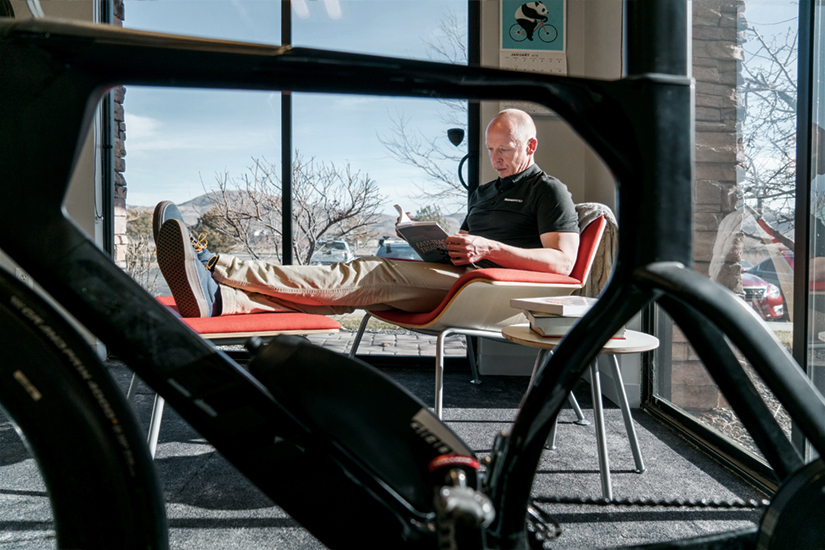
Once athletes complete a full cycle of training, the next step will depend on their goals until the next training cycle is scheduled to begin. This period of time may vary from rider to rider, but I will outline three different rider scenarios that should provide enough direction no matter what circumstances you’re under.
The Transition After Specialty Training
With 52 weeks in the year, and with the full Base, Build, Specialty sequence typically lasting 28 of those weeks, many riders wonder what they can do to fill in the gap. This is the period of time most refer to as the “off-season”, and I will outline 3 different approaches based on three different goals.
- There are some riders who are targeting another high-priority event/competitive season following the completion of a full Base, Build, Specialty sequence of training.
- There’s another camp who chooses to fill their time focusing on a limiting aspect of their performance, appropriately known as a “limiter”.
- Then, others prefer to simply maintain the fitness they’ve established throughout the previous months of training until the next training cycle is scheduled to begin.
One thing is clear for each and every rider coming out of the Base, Build, Specialty cycle: a small period of time-off (1-3 weeks) is recommended before going down one of these paths. Depending on your fatigue and/or motivation, this time off can be spent with some totally unstructured riding, active recovery rides, or time off the bike completely. But my biggest concern in making this recommendation is to provide brief stress relief on the autonomic nervous system and endocrine system before diving back into training.
How to Build a Second Fitness Peak
Athletes who choose to target another high-priority event following the final phase of training can continue getting faster by manipulating Base, Build, Specialty to fit a shorter time frame.
Depending on how long the gap is between the event you “peaked” for at the end of your Specialty training and the second event you’re targeting, you will return to Build Phase training. This is what I like to call a “rebuild”, in which case you will do the latter half (typically 2-4 weeks) of your Build training before “re-specializing” (i.e. entering another Specialty training phase).
For Example:
Say you have 12 weeks between two high-priority events. Since you won’t have enough time to complete entire Build and Specialty phases, the solution is to complete the partial revisitation of Build training before reassessing your fitness and completing another Specialty phase training plan. Should the gap be longer than that, you can apply this “rebuild” principle by extending the time revisiting the Build and even Base training.
Note:
Athletes who follow the re-build approach to target another event should also schedule a small break between their second high-priority event and the beginning of the next training season.
Off-Season Focus on a Limiter
Athletes who aren’t planning for another event following a full training cycle, but wish to focus on a limiting aspect of their performance, can address that limiter using similar principles as the re-build approach.
Just like the re-build approach, you’ll need to evaluate the time period you have until your next season of training is scheduled to begin. With that in mind, you have the option to return to Build Phase training for 2-4 weeks and follow that with a Specialty plan of your choosing. If you’re designing your own plan, you’ll select workouts that specifically address the weaknesses that are plaguing your performance.
For Example:
You complete a small break after your high-priority event following a full training cycle and take note that your climbing ability was the aspect of your performance that held you back. After taking a look at when you’d like to begin training next season, you find you have 18 weeks to address the limiter. You’ll also account for 1-3 of those weeks to include a significant reduction in training volume/intensity in anticipation for the next training cycle.
With 16 weeks to dedicate to training, you’ll have enough time to focus on the limiter in the same format as a Build and Specialty sequence of training. So you’ll use 8 of those weeks to build your climbing capabilities through a blend of strength endurance work (Sweet Spot power zone), lactate tolerance workouts (Threshold power zone), and maximum aerobic power intervals (VO2max power zone). And you’ll take this one step further by reassessing your fitness and entering into a 8-week revisitation of a Specialty training plan. The workouts you’ll focus on in this period will emphasize a split between high-power, often explosive efforts and extended, near-FTP efforts that all find their way into your climbs.
Note:
Refer to the Build and Specialty Phase sections of this ebook for help in manufacturing your own off-season approach to addressing a limiter.
Maintaining Fitness in the Off-Season
The final possible route an athlete may take is to simply maintain the hard-earned fitness they’ve established through the previous training cycle. The good news is properly established fitness takes comparatively little to maintain than what it took to build.
There are four separate types of fitness that I’ve outlined below. If you’d like to simply maintain any/all of them, research supports that you can do so on relatively little work. If you’re not too concerned with slight decreases in any of these categories, feel free to leave it/them by the wayside.
- Aerobic Endurance: Once every 2 weeks, do a long, low-intensity ride. Ride long enough that the fatigue comes as a product of the ride’s duration, not its intensity.
- Anaerobic Power: Once a week. Something along the lines of 30- to 60-second repeats upwards of 130% FTP should suffice.
- Muscular Endurance/Threshold: Once a week. Try a 2×20-minute Threshold or even Sweet Spot workout.
- Sprint Power: Once a week. Perform 4-6 all-out efforts somewhere between 20-30 seconds long.
Note:
Athletes who follow a maintenance approach to the off-season will not require the “padding” of downtime before the training season that follows.
Training Plan Guide Summary
Considering the typical 28 weeks in a full training cycle, the period between your last season’s training cycle and next season’s is typically 24 weeks. Cut that down 2-6 weeks or so with the “padding” of downtime at the tail-end of the last training cycle and that precedes the next. But not all athletes fall into a single category within these confines.
Some wish to target another competitive season, while others choose to address a limiting aspect of their performance. Others simply want to hold onto the fitness they’ve earned. In all cases, principles and structure of the Base, Build, Specialty cycle can be used to continue getting faster, even in the off-season.
Training Plan Resources
- To follow the structured training process outlined in this guide, use Plan Builder to have a custom training plan automatically built for your goals.
- For help choosing and modifying your structured training plan, browse our online training questions resource.
- For any questions you can’t find the answer to in our training questions resource, listen to our weekly podcast, the Ask a Cycling Coach podcast — the only podcast dedicated to making you a faster cyclist. New episodes are released weekly.
For more cycling training knowledge, listen to the Ask a Cycling Coach — the only podcast dedicated to making you a faster cyclist. New episodes are released weekly.
References
- Bompa, T. O., (1999). Periodization: Theory and Methodology of Training 4th ed.
- Astrand, P. O., Rodahl, K., (1970). Textbook of Work Physiology
- Fox, E. L., Mathews, D.K., (1976). The Physiological Basis of Physical Education and Athletics
- Issurin, V., (2008). Block Periodization






